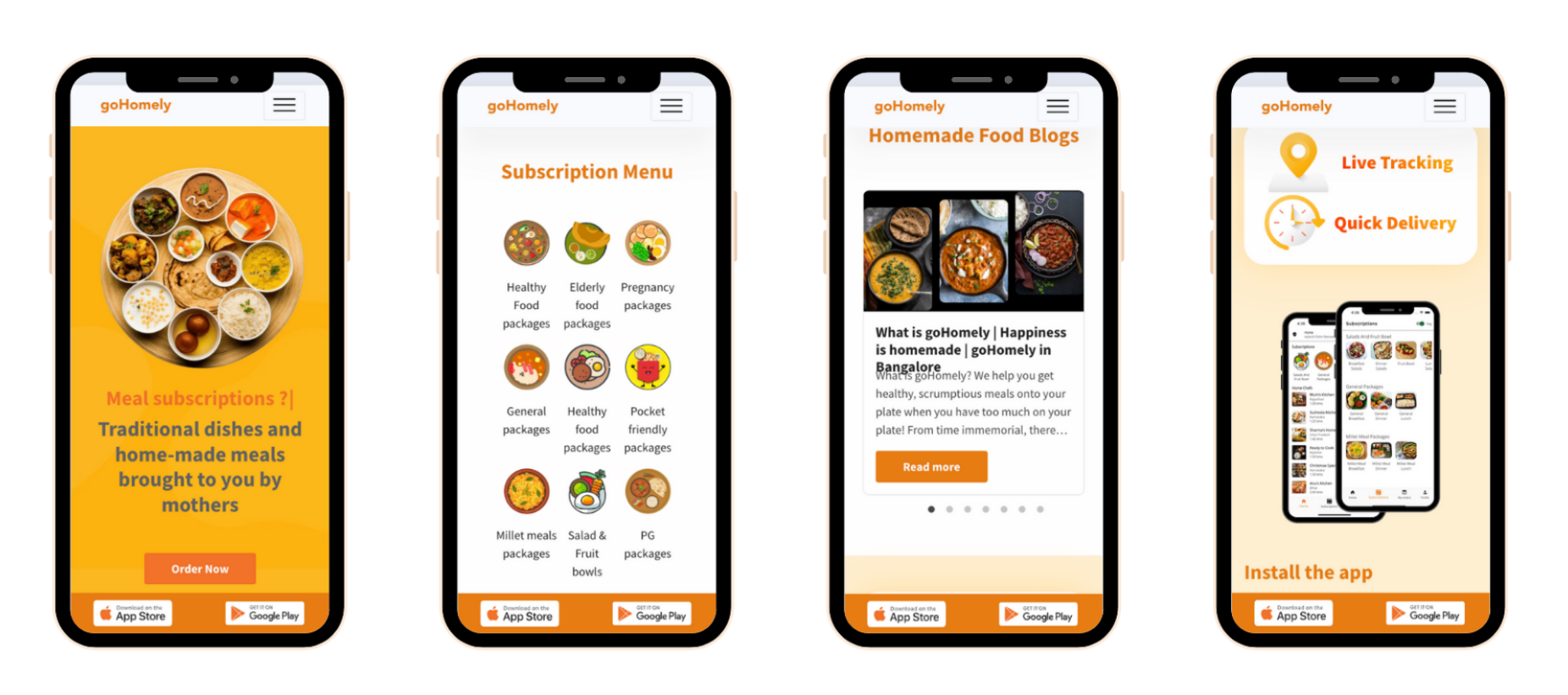GTM & Product-Market Fit
A 4-month playbook for launching an online meal-subscription platform, defining a multi-pillar GTM strategy, and validating Product-Market Fit to drive scalable growth.

Problem & Solution
Problem: Time-poor urban professionals faced fragmented meal options with unpredictable quality, inconsistent portions, and a poor subscription UX.
Solution: We developed a platform offering tiered weekly subscription plans, predictable delivery SLAs, dietary filters, flexible subscription management, and local kitchen partnerships for operational consistency.
My Role as a Product Manager
As Product Manager, I was responsible for the complete product strategy, roadmap, and GTM planning for GoHomely. My role encompassed partner integrations and validating Product-Market Fit across a 4-month cycle, from MVP conception to a full market launch.
Market Framing
We defined a clear and targeted market position by deeply understanding our customer's needs and context.
Ideal Customer Profile (ICP)
Professionals aged 25–45, dual-income households who value both health and convenience.
Job-To-Be-Done (JTBD)
"I want affordable, healthy meals delivered consistently so I can focus on my work and family."
Positioning
Reliable subscription meals with curated nutrition and a guaranteed delivery SLA.
Go-To-Market Pillars & Tactics
Our GTM strategy was built on five core pillars, each with clear hypotheses, experiments, and measurable KPIs like CAC, LTV, and retention cohorts.
Acquisition
Leveraged performance marketing, SEO, corporate partnerships, referral programs, and local office samplings.
Activation
Focused on a streamlined sign-up, clear transactional confirmations, and a "first-week delight" initiative.
Retention
Drove stickiness with menu personalization, flexible pause/skip options, loyalty rewards, and engagement sequences.
Monetization
Optimized ARPA and LTV:CAC through tiered subscriptions, meal add-ons, and A/B pricing experiments.
Operations
Ensured quality and efficiency with kitchen SLAs, SOP audits, route optimization, and delivery exception tracking.
Growth Experiments
Ran A/B tests on checkout UX, a double-sided referral program, and price elasticity tests to optimize key funnels.
The Product-Market Fit Approach
We used a mix of qualitative and quantitative signals to measure PMF, prioritizing experiments with the RICE framework to focus on high-impact initiatives.
Key Signals & Metrics
Our validation process went beyond surface-level data to ensure we were building a product customers truly valued and a business that was economically viable.
Qualitative Signals
NPS score and the Sean-Ellis "How would you feel?" survey.
Quantitative Metrics
D7/D30 retention cohorts, trial-to-paid conversion rate, and churn.
Financial Viability
LTV:CAC ratio > 3, payback period, and MRR growth.
Launch Timeline (4 Months)
-
Month 0: Foundation
MVP scoping, kitchen pilots, payments setup.
-
Month 1: Validation
Invite-only beta program & feedback loop.
-
Month 2: Pilot Launch
Full city pilot, launch paid channels.
-
Month 3: Scaling
Scale paid channels, automate operations.
-
Month 4: Consolidation
Consolidate playbook for regional roll-out.
OKRs & Launch Achievements
The focused 4-month launch strategy successfully hit its primary objectives, validating the business model and positioning GoHomely for future growth.
5,000
Paid Subscribers (Pilot KR)
≥ 40%
Day 30 Retention
≥ 3
LTV:CAC Ratio
20%
Faster Time-to-Market